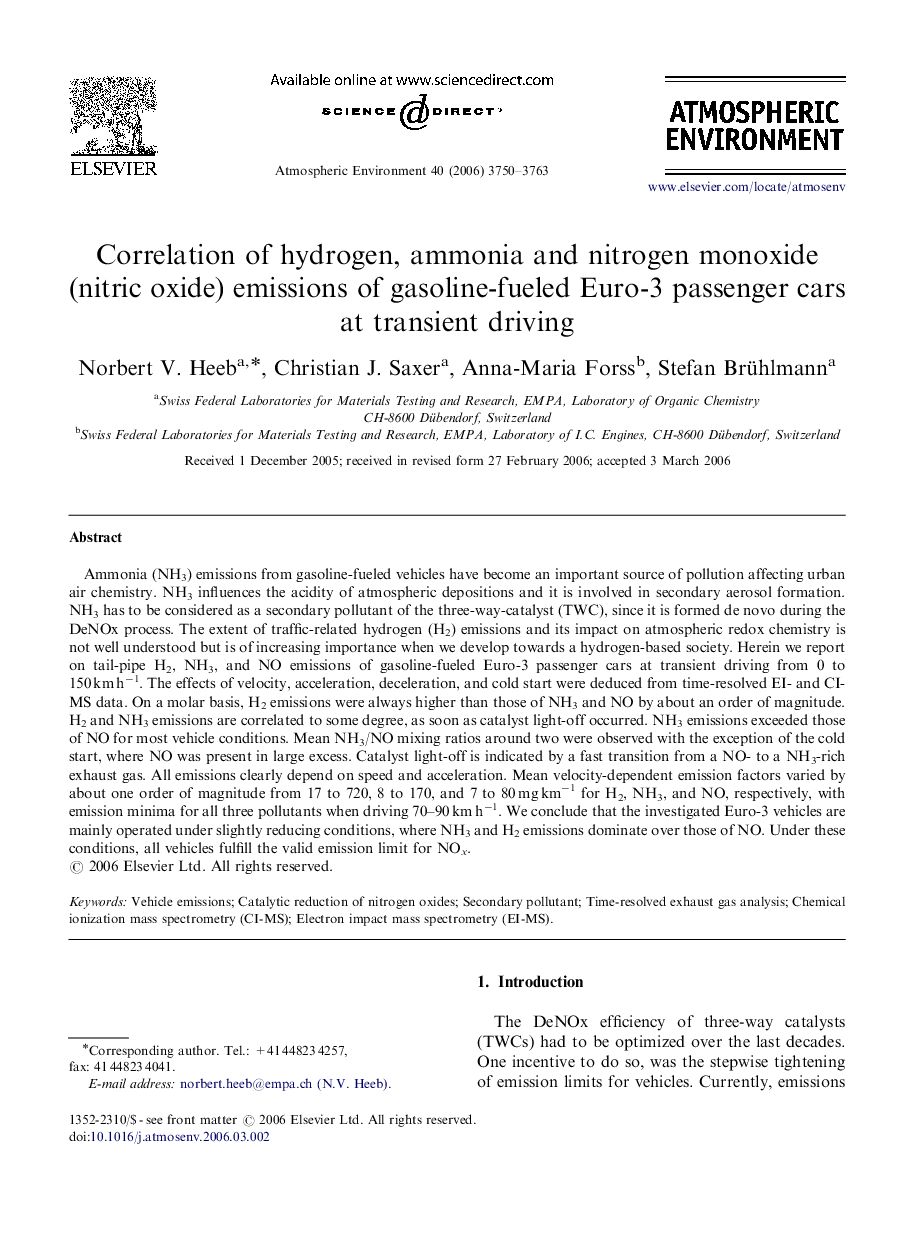| Article ID | Journal | Published Year | Pages | File Type |
|---|---|---|---|---|
| 4444240 | Atmospheric Environment | 2006 | 14 Pages |
Ammonia (NH3) emissions from gasoline-fueled vehicles have become an important source of pollution affecting urban air chemistry. NH3 influences the acidity of atmospheric depositions and it is involved in secondary aerosol formation. NH3 has to be considered as a secondary pollutant of the three-way-catalyst (TWC), since it is formed de novo during the DeNOx process. The extent of traffic-related hydrogen (H2) emissions and its impact on atmospheric redox chemistry is not well understood but is of increasing importance when we develop towards a hydrogen-based society. Herein we report on tail-pipe H2, NH3, and NO emissions of gasoline-fueled Euro-3 passenger cars at transient driving from 0 to 150 km h−1. The effects of velocity, acceleration, deceleration, and cold start were deduced from time-resolved EI- and CI-MS data. On a molar basis, H2 emissions were always higher than those of NH3 and NO by about an order of magnitude. H2 and NH3 emissions are correlated to some degree, as soon as catalyst light-off occurred. NH3 emissions exceeded those of NO for most vehicle conditions. Mean NH3/NO mixing ratios around two were observed with the exception of the cold start, where NO was present in large excess. Catalyst light-off is indicated by a fast transition from a NO- to a NH3-rich exhaust gas. All emissions clearly depend on speed and acceleration. Mean velocity-dependent emission factors varied by about one order of magnitude from 17 to 720, 8 to 170, and 7 to 80 mg km−1 for H2, NH3, and NO, respectively, with emission minima for all three pollutants when driving 70–90 km h−1. We conclude that the investigated Euro-3 vehicles are mainly operated under slightly reducing conditions, where NH3 and H2 emissions dominate over those of NO. Under these conditions, all vehicles fulfill the valid emission limit for NOx.
